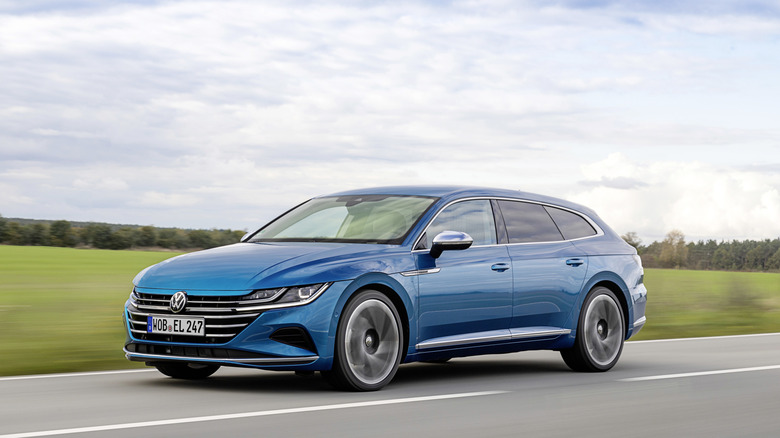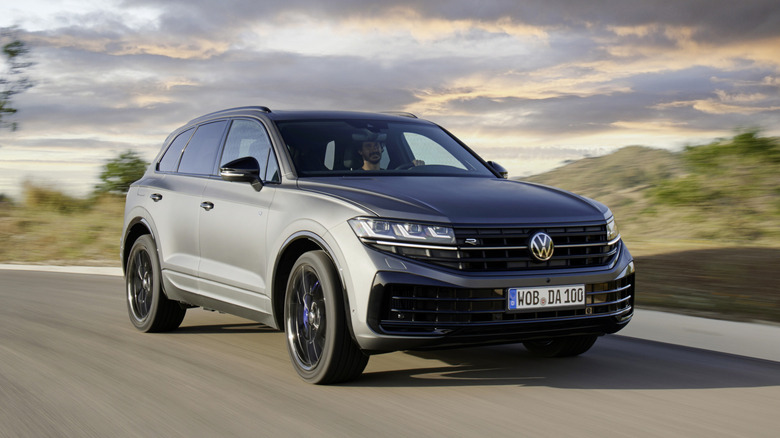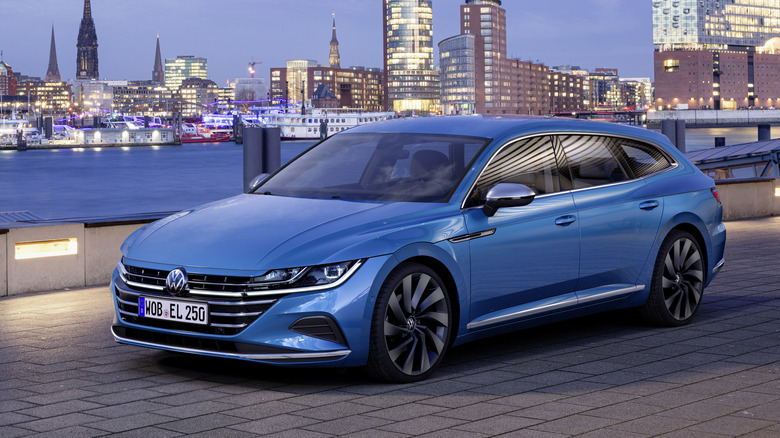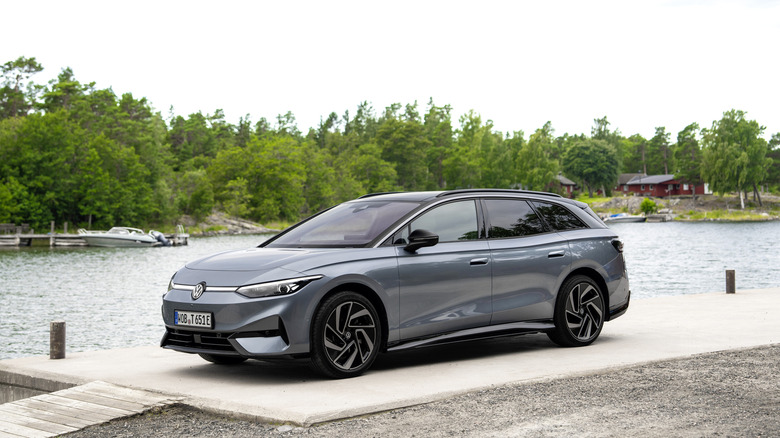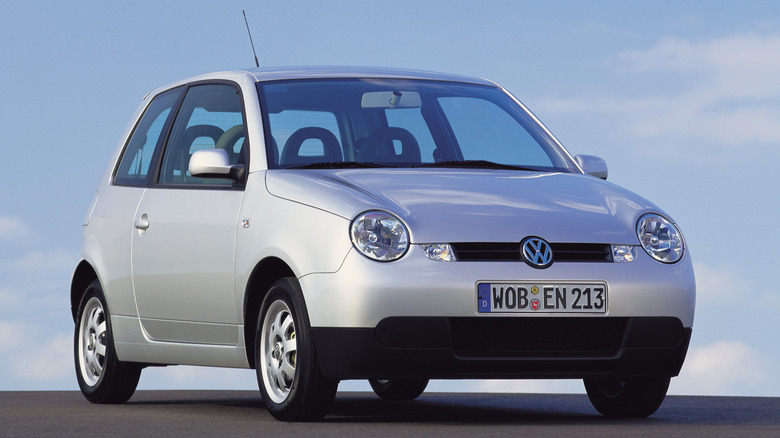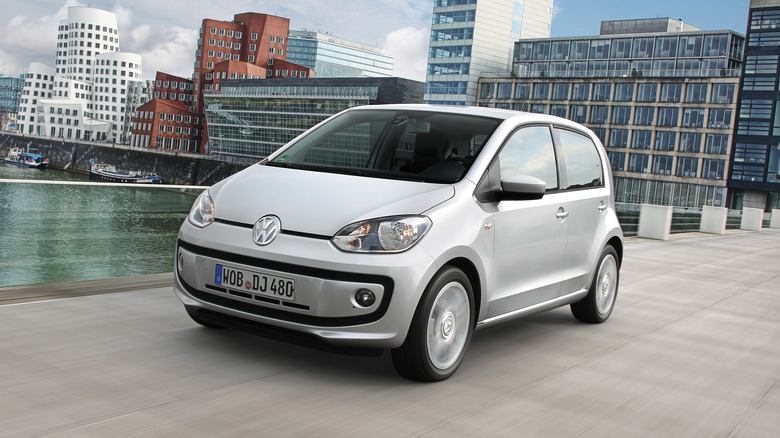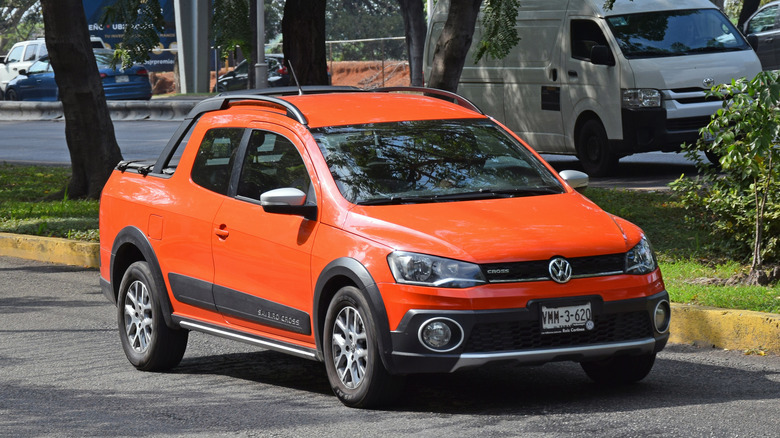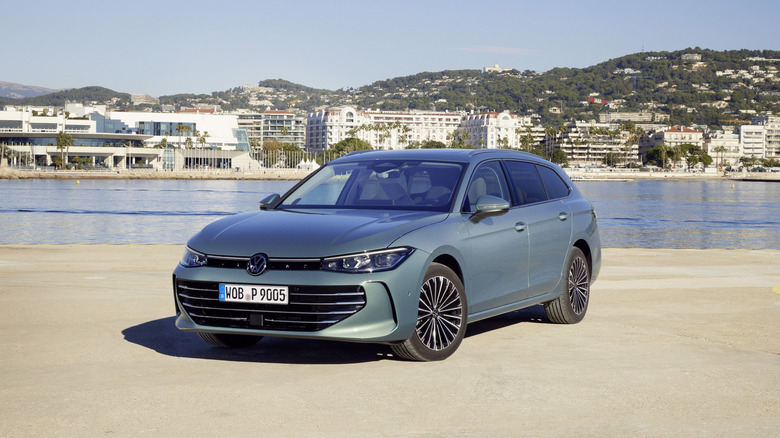The Coolest VW Models North America Never Got
Ferdinand Porsche had no idea that he was about to completely revolutionize the automotive industry after launching the Volkswagen Type 1, or as we all know it, the Beetle. With most of Germany getting a set of wheels after the war and spurred on by the immediate success of the rear-engined car for the people, Volkswagen would begin development of new vehicles and eventually would also start a highly successful global expansion, as well as a whole catalog of super successful models.
Volkswagen of America first started operations in 1955, and to this day, it remains one of the most popular automakers on the continent. In most cases, VW's American and European lineup match up pretty closely, but North America also gets a few exclusive models intended for those market-specific buyer tastes and needs.
While the U.S. and Canada have received a good majority of the most popular VW models, some unfortunately never left their home markets. Whether it was due to market differences, or because it simply wouldn't make sense to sell such a car in North America, there are some VW models that the U.S. and Canada unfortunately never got.
Touareg (Third Generation)
The first two generations of VW's first ever SUV, the Touareg, were officially offered in North America. Not only that, but in the case of the original model, VW also offered the truly insane 5.0-liter V10 diesel engine, as well as a few others that made infinitely more sense. The second-generation Touareg would also reach North America, but after that, it was no more.
VW gave Americans the Atlas, a more affordable three-row SUV designed specifically for the needs of the market. Meanwhile, over in Europe, the VW Touareg entered its third generation, which is still on sale today. Being based on the MLB platform, a common joke is that the Touareg is, in many ways, the cheapest possible way to have the same underpinnings as the Porsche Cayenne — and the Bentley Bentayga — and the Lamborghini Urus.
The current Touareg, which was recently facelifted for model year 2024, offers gasoline, diesel, and plug-in hybrid power. There's also a Touareg R with a plug-in hybrid V6 and an impressive power output of 462 horsepower. Unlike most of the other VW products offered in Europe, the Touareg is still a luxury SUV through and through.
Arteon Shooting Brake
Around a decade ago, VW made the interesting decision to offer the surprisingly sorted CC to North America. The CC's replacement, the Arteon, would also reach the U.S. and Canada after it debuted. Despite the demographic for the Arteon being completely negligible, Volkswagen still stubbornly offers it. However, Americans are stripped of the best version of the Arteon: the Shooting Brake, added to the lineup after the 2021 facelift.
The premature demise of the Mercedes CLS Shooting Brake didn't really deter Volkswagen from offering a niche wagon version of its already very niche coupe sedan. The Arteon Shooting Brake is based on the regular Arteon, but it gets a longroof body for more practicality and more space for rear passengers.
What's more, the Arteon Shooting Brake was offered with a 316-horsepower turbo four-cylinder in the Arteon R, something that North America also didn't get, even on the regular Arteon. The interior is straight out of the Passat, with a few minor touches here and there. Despite the Arteon arriving well into the SUV revolution, VW refuses to give it up. The Shooting Brake is quietly being discontinued in Europe, and if anything, it would have been cool to see it in limited numbers due to a lack of affordable cool wagons in North America.
ID.7 Tourer
Back in 2023, VW showed the world the car that would attempt to take the throne of the Tesla Model 3 and Model S: the ID.7. Based on the same modular MEB platform as almost every other VAG electric car, the ID.7 is a massive, super practical sedan with an impressive projected range of 440 miles on the European WLTP cycle, and of course, a whole lot of technology. Actually, as far as the range is concerned, it's capable of a lot more.
Although the ID.7 will be available in North America, it'll be offered exclusively as a sedan. Meanwhile, Europeans will also enjoy a station wagon version of the ID.7 called the Tourer. Aside from the longroof body and the increased cargo space and practicality, the ID.7 Tourer is identical to the ID.7 sedan in every other aspect.
However, the deal gets sweeter with the ID.7 GTX Tourer. GTX is the badge applied to VW's performance EVs, and in the case of the ID.7 Tourer, the wick on the electric powertrain is turned up to produce 335 horsepower, and coupled with AWD, it should be one fantastic wagon to drive.
Lupo
By the late 1990s, the tiny car market in Europe was booming. Cities were getting quite crowded, and having a really small car made a lot of sense. Not wanting to be left out of the success enjoyed by the likes of the Smart car, VW introduced its own take on the A-segment hatchback in 1998: the Lupo.
While most other VW models were conservative at best during this time, the Lupo was actually cute. It was tiny, and it had a very friendly face with round headlights that was very unlike anything from Volkswagen, at least not since the Beetle. Even though it was small, it was still a four-seater, and it had a reasonable cargo area.
Power came from a variety of small, economical engines, and there was even a three-cylinder diesel engine that was capable of almost 80 MPG in the Lupo 3L TDI, just one of many bizarre diesel-powered cars we've seen through the years. For those who wanted a more playful experience, there was also the Lupo GTI, which was like the original Golf GTI in a lot of ways. We get that this type of vehicle is not suitable for North America in just about every way, but it would have been totally awesome to see.
up!
The replacement for the Lupo, the Fox, wasn't received well, and it didn't last a very long time. However, VW had an ace up its sleeve: in 2011, the "up!" was introduced to the world. This was the replacement for the Fox, and it was actually one part of a trio of nearly identical city cars all marketed under different VAG brands.
The up! was a totally different vehicle compared to the Fox. For one, it was offered with five doors, while being a little less bulky. The styling was way funkier and more interesting, also helped by the multitude of personalization options that VW offered. At the time, it had the largest cargo area in its class and it could comfortably seat four adults inside.
Power came from a single 1.0-liter three-cylinder gasoline engine in a few different states of tune. 60 and 75 horsepower for most models, and there was also a turbocharged version with 90 horsepower and a 115 horsepower version was installed in the riotous up! GTI, and there was even an electric model called the "e-up!". The Volkswagen up! became a darling of the A-segment due to its maturity and status as one of the most complete A-segment packages on the market. It was so successful, in fact, that it only went out of production recently in November 2023.
CitiGolf
Now we're getting to the nitty-gritty. Everyone knows about the Mk1 Golf; it was the car that brought even more new buyers to Volkswagen, and although it didn't have quite the same charm, it still proved to be an extremely effective replacement for the Bug. The Mk1 Golf enjoyed ample amounts of success all over the world, including in South Africa, and it was the starting point for one of the most successful compact cars of all time.
When the time came to introduce the Mk2 Golf, however, various manufacturing costs would make it prohibitively expensive for most South African buyers. Their [South Africans'] solution? Continue manufacturing the Mk1 Golf, throwing in a few improvements over the coming years — no, actually, make that decades.
While the Mk2 Golf started production in 1983 all over the world, the Mk1 Golf continued to be built and offered new in South Africa until, and 2009. Over the years, the CitiGolf, as it eventually became known, received some well-deserved updates like a more modern interior and slightly updated fascia designs. There was also a CitiGolf 1.8i R, which was essentially a GTI, with a punchy 1.8-liter engine under the hood. It's important to note that this CitiGolf has nothing to do with the City Golf, the heavily facelifted Mk4 Golf offered in Canada.
Saveiro
Before becoming a mundane cargo and passenger van that recently lent its underpinnings to Ford for the Tourneo and Transit Connect, VW's Caddy was something far more interesting and appealed to all the weird car enthusiasts out there: it was, essentially, a Mk1 Golf-based coupe utility. Ute, as Australian enthusiasts prefer to call it.
After the Mk1 Golf was discontinued, this gap would remain in VW's lineup for a long time in just about every global market. Except Latin America. Latin Americans were not ready to give up their VW coupe utility just yet, moving it to the underpinnings of their beloved Gol. The result? The Saveiro.
The Saveiro has been a staple of VW Brazil and Latin America's lineup for decades, and it's one of the most popular utility vehicles over there. From every conceivable angle, it's designed to be affordable and cost-effective, but that's no bad thing, as it continues to serve its purpose, managing to find 1.6 million buyers over its four-decade-long production run.
Passat Variant
The NMS Passat, specifically for North America, bowed out in 2022, but the Passat itself has carried on in Europe, where it is still one of the most popular cars in the mid-size segment. Volkswagen made quite a controversial decision for its ninth generation: the latest Passat is now available exclusively as a station wagon.
While this hasn't really happened before, it's easy to see why VW made this decision. The Passat Variant was much more common in the majority of Europe due to its extra practicality and Europeans' penchant for going on vacations and towing campers. While you can get the Passat's sister car, the Skoda Superb, as a liftback, the Passat is wagon-only.
Power comes from a familiar lineup of both direct injection gas and diesel power units. Some engines are also available with mild hybrid tech, and a plug-in hybrid promises a class-leading 62 miles of EV-only range. With 24 cubic feet of cargo space, and that's with the rear seats up, the Passat has plenty of room inside for people and all of their belongings.
